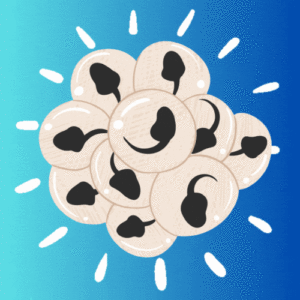
Discover how we started using tadpoles in neuroscience and learn about how we study them in our lab.
- The Use of Amphibians in Research
- Producing Tadpoles
- The Tadpole Brain and Nervous System
- Recording Activity of Neurons
- Recording the Connections Between Neurons
The Use of Amphibians in Research
The use of frog and amphibian tadpoles to study the brain began long before we started our lab.
Coghill took motion pictures to define the development of the tadpole’s swimming behaviour in response to touch. It bends into a coil (1 to 4) and then swims off (5 to 10).

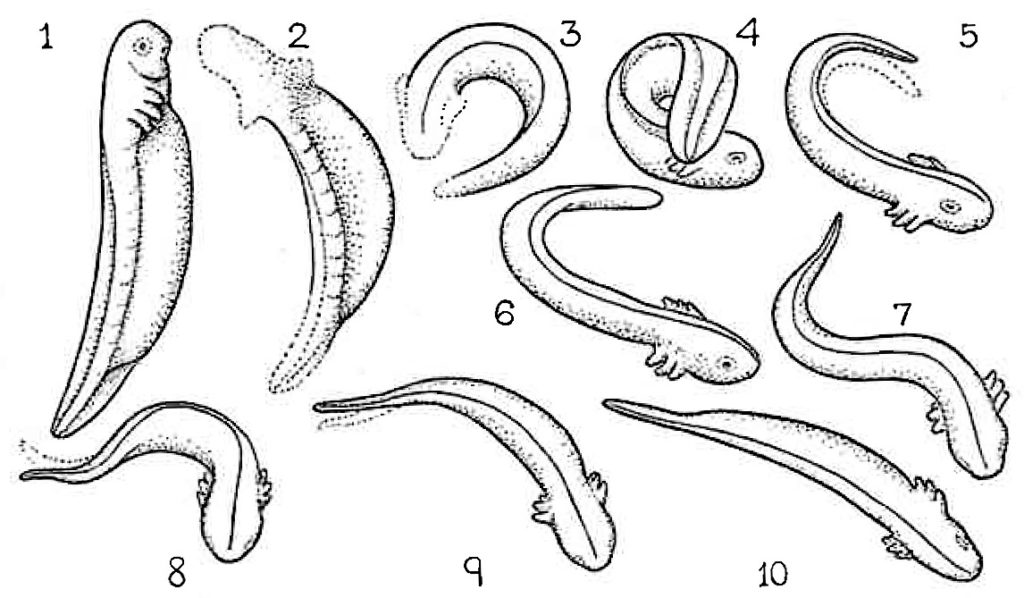
Xenopus laevis also are not the only species of frog that are used by neuroscientists and developmental biologists. While they are a popular animal model due to them being entirely aquatic and can be induced to mate using chorionic gonadotrophin, many other species of Xenopus can be used. To see the different species used in research, refer to Xenbase.
Producing Tadpoles
We have a breeding colony of South African Clawed Toads (latin name: Xenopus laevis). Each week we give a pair of adult toads an injection of the hormone human chorionic gonadotropin to induce mating and egg laying. Below is an image of what the adult toads look like, with females toads in the top row and male toads in the bottom row. We use their pigmentation patterns on their backs to recognise individual frogs.
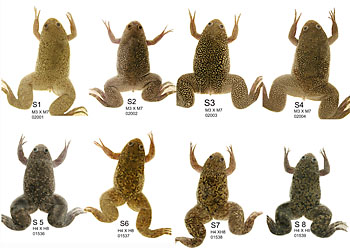
We collect the ~ 1mm eggs from the animal facility and after one day in the lab they look like this:
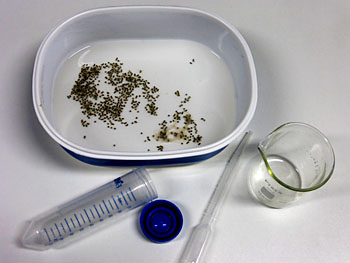
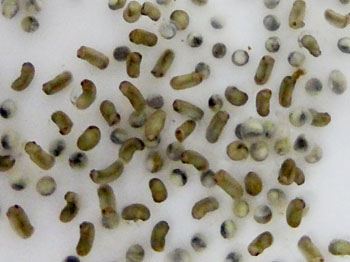
The eggs are large (~1mm across) and as they divide to make an embryo with many cells, the yolk divides as well, so each cell has its own supply. This means that parts of the embryo can be removed and will survive and grow on their own. Small pieces can also be transplanted to new positions to see if they influence the development of other tissues (like the lens in the eye).
When you look more closely you can see that some are beginning to get longer and look like tadpoles. The round grey eggs are in the process of degrading.
After 24 hours, the Xenopus embryo has made the beginnings of a nervous system. During the next 29 hours it grows into a tadpole and the nervous system and muscles start to function. At room temperature they reach the hatching stage after two days during stage 37/38 (see below). The image below shows the stages of development of a tadpole in the first three days after hatching.
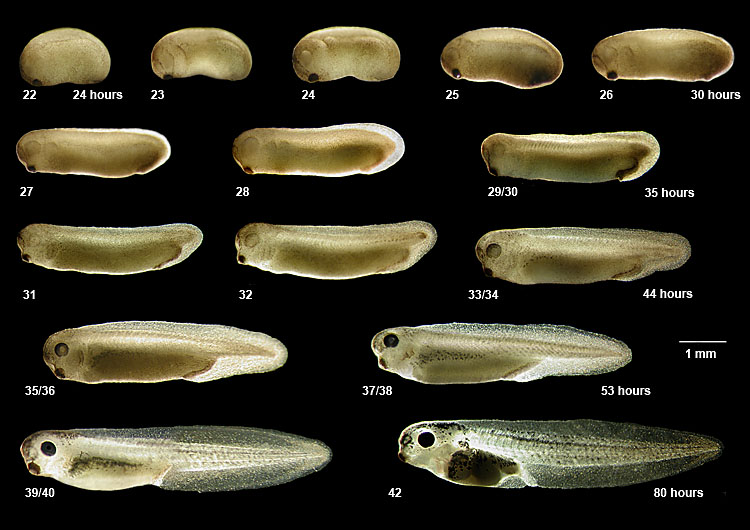
The Tadpole Brain and Nervous System

A newly hatched Xenopus tadpole is only 5mm long. Its brain contains about 3,000 nerve cells, called neurons. While the front section of the brain is only just starting to develop, most of the neurons are in the hindbrain and spinal cord, which is located between the red arrows in the image
The spinal cord is very small- about the same thickness as a human hair (~ 0.1 mm across)! The hindbrain (between the ears and above the gills) is bigger and has a fluid filled space or ventricle in the middle. The little yellow dots near the ventricle are neurons, which are ~ 0.01 mm across.
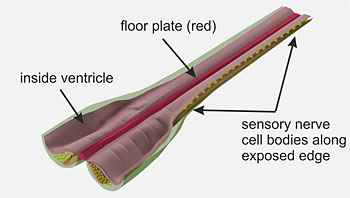
To expose neurons we open the hindbrain and spinal cord along the top, like shown in the diagram above. This immediately reveals sensory neuron cell bodies. These neurons have nerve fibres in the skin which are excited by touch, such as when the tadpole is prodded by a hair.
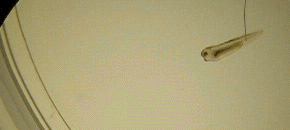
Slowed down video recording of a tadpole’s swimming response when prodded with a hair
By removing small areas of the wall of the ventricle, shown in pink the diagram, other types of neurons can be seen under a microscope. This allows us to record the activity of these neurons.
Recording Activity of Neurons
These small nerve cells communication with each other using electrical signals, which require specially made devices to record. When the spinal cord is opened, the tadpole is held on a small platform in a dish of salty solution (saline) to imitate frog’s blood. We put the dish on a powerful microscope with 400x magnification to see the cell bodies of neurons exposed at the opened top edge of the spinal cord. The long red arrow in the left image below shows where we position the dish:
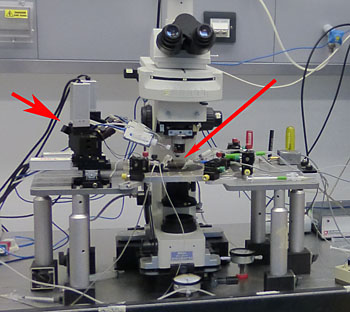
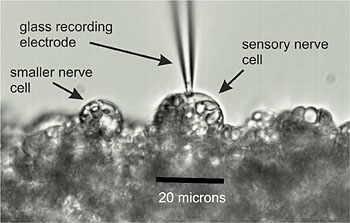
We use electronically controlled manipulators, shown by the short red arrow, to place a glass recording electrode onto a single neuron. In the picture above to the right, the electrode is placed on a sensory neuron. These are the largest neurons in the spinal cord and are excited when the skin is touched. A recording electrode allows us to record the voltage of the neurons we place them on, like the recording below:
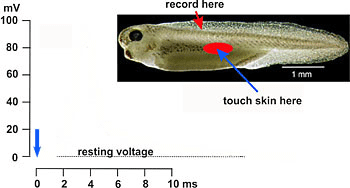
The neuron sits at its resting voltage and when the skin is touched, noted by the blue arrow in the image and time 0 in the graph, an electrical nerve impulse or action potential occurs. The voltage suddenly spikes for about 3 milliseconds.
This action potential is the electrical signal which travels along nerve fibres or axons so one nerve cell can excite or inhibit another at connections called synapses. That’s how electrical signals travel around the brain.
Recording the Connections Between Neurons
Nerve cells exchange signals at special junctions called synapses. To look for synaptic connection or synapses, we take recordings from two neurons at the same time. We stimulate neuron one by injecting a small current through its electrode to evoke an action potential and see how the other neuron responds.
In this case, there is a response in neuron two, which starts shortly after the action potential in neuron one. The delay is about 2 milliseconds.
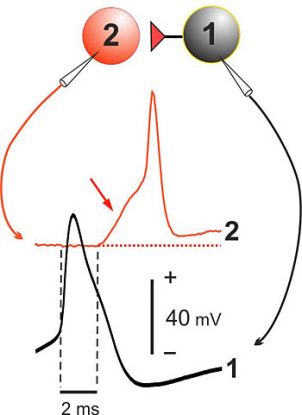
This small delay tells us that the electric current is not flowing directly from neuron to neuron. In reality, the following events occur to allow the electric current to travel from one neuron to the next:



This is how a signal is passed from one neuron to another in the nervous system.
To see the anatomy of the neurons after the recording, we use a chemical marker or dye and let it spread from the recording electrode into the neuron. We process it so the spread is visible under the microscope, which allows us to take detailed photos.
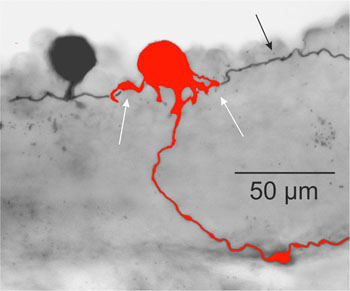
This photograph from one side of the spinal cord shows the sensory neuron one (shown in black) and neuron two (shown in red) from the recording we looked at above. White arrows show possible synaptic connections. The black arrow shows the axon or nerve fibre of neuron one.
The methods described here can be used to study many types of neuron in the tadpoles brain and spinal cord. For more details go to the Science pages.



